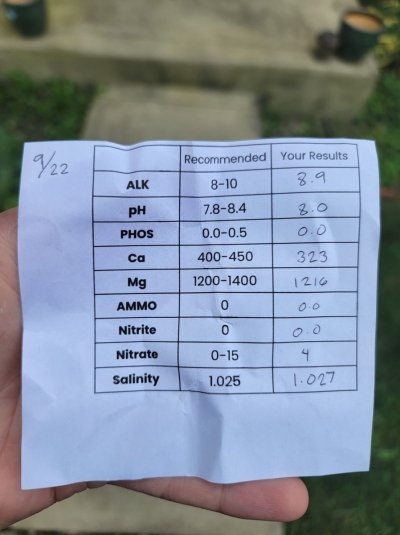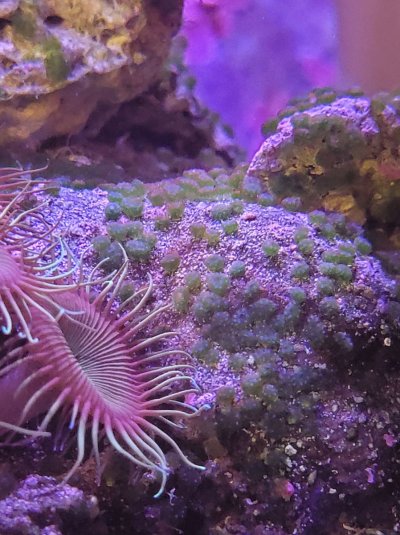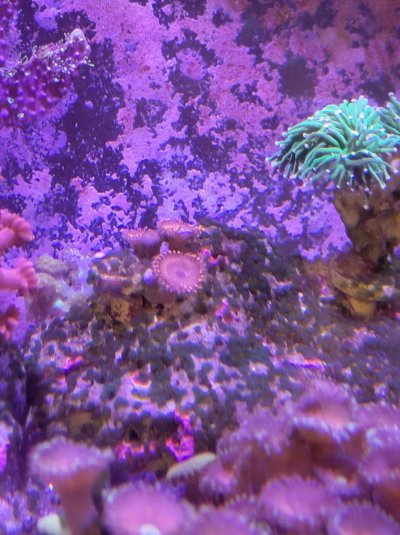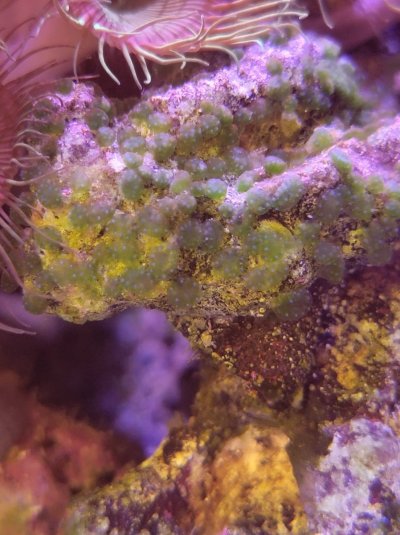Need help identifying what this is in my tank. It has been slowly progressing over the past few months now with no sign of stopping. Originally did not think it was an issue but as you can see with the Zoa in the one photo it is growing directly onto corals.
I am not sure if this is what's causing that Zoa to die off or just bad positioning as the other Zoa's in the tank are thriving but it is the only one currently being invaded by it. I have also had torch head's die off that are covered in this. I recently went at it with a toothbrush and brushed it off everything I could. It is covering rocks though and not going to be possible to maintain manually.




I am not sure if this is what's causing that Zoa to die off or just bad positioning as the other Zoa's in the tank are thriving but it is the only one currently being invaded by it. I have also had torch head's die off that are covered in this. I recently went at it with a toothbrush and brushed it off everything I could. It is covering rocks though and not going to be possible to maintain manually.




















